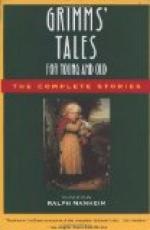The tribe known as the Osages, or Wa-saw-sees, as they denominate themselves, wander perennially round the head waters of the Arkansas and Neosho, or Grand Rivers, hunting, fishing, and trading with the Americans at Fort Gibson, the outermost south-western fort on the frontier of the United States. Tall, even gigantic in stature, they have many qualities which excite the admiration and applause of their white brethren. Like most Indians, they are brave and warlike; but their peculiarity consists in rejecting the customs of the whites, particularly the use of whisky. Wearing their wild and primitive costume, they stalk amid the hunters, squatters, trappers, and trampers that frequent the neighbourhood of Fort Gibson, overtopping them in general by a head, but still more surpassing them in the essential virtue of sobriety and temperance—a failure in the exercise of which would doubtless soon remove them from the pre-eminence they now enjoy.
In a secluded valley, through which a stream that fell into the Neosho wound its way, lay some time back one of the villages of this nomadic tribe. The wigwams were about a hundred in number, scattered over the narrow plain, near the mouth of the valley, and surrounded by a rude picket. Built of bark and reeds, they were evidently constructed simply for the necessities of the summer season, during which the warriors chased the deer and buffalo for immediate consumption, and to lay up in store for winter. Overlooking the village was a grassy mound, that narrowed the mouth of the valley, and caused the rippling stream that flowed at its feet to turn abruptly from its course. From the summit of this hillock, the lodges wore the appearance of a huge congregation of bee-hives, while the eye rested pleasantly on many adjuncts to the scene, which rendered it agreeable and picturesque. The village was alive with a busy throng of women, few if any men being discovered; while children were seen at every point, adding still greater animation to the picture. The first were all actively employed. Some stood at the entrance of their wigwams, busily engaged in cooking; others were drying and packing the results of the hunting of the warriors; while others, again, were laboriously occupied in cleaning fresh buffalo-skins, preparatory to their being cured for use as robes. Not a married woman was idle. Not so, however, the maidens. They were yet enjoying the sweets of a liberty which, however, despite the hardships incident to the married state in the wilds, they were no less anxious to sacrifice than are many bright-eyed beauties nearer home. The Osage girls—and many of them were exceedingly pretty—were congregated near the edge of the stream, in which dozens of little urchins were bathing. Dancing was usually their chief amusement; but on the present occasion they were spectators of a scene which possessed more immediate interest.




